This product is no longer manufactured. Remaining stock may still be available. Please refer to the alternatives listed below under "Similar products" or contact us directly.
Alternative Products for this discontinued product:
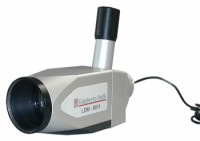
LDM-1901
Photobiological risk group classification (spectral or integral measurement)
- Photobiological risk group classification of optical radiation sources in the spectral range 300 nm to 1050 nm
- UV Hazard measuring device in the spectral range 200 nm to 400 nm
- Integral detectors for assessing the radiation hazard of light sources
- According to IEC 62471:2006 and EN 62471:2008.
- Spectral irradiance and spectral radiance or radiance
- Measuring distance radiance 200 mm and 1000 mm
- Field of view 100 mrad, 11 mrad and 1.7 mrad with camera-based viewfinder. CW and pulse measurement.
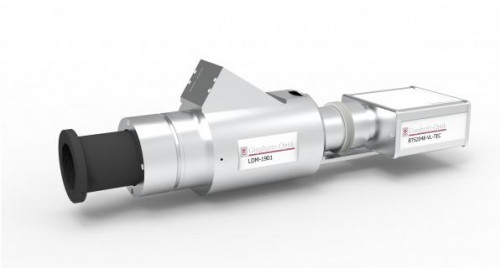
The introduction of IEC 62471:2006 was originally prompted by the need to remove LEDs from the existing laser safety standards. Within Europe, EN 62471:2008 specifies the photobiological safety classification of non-coherent optical sources. It is a harmonised standard under the low voltage directive and is therefore required for CE marking of products.
To protect workers from the possible harmful effects of optical radiation, the EU introduced the Artificial Optical Radiation Directive, 2006/25/EC, which became law in all member states from April 2010. The directive makes reference to EN 62471:2008 for all non-laser sources. In Germany, for example, the directive was implemented with the Occupational Health and Safety Ordinance on artificial optical radiation.
Sophisticated Radiometric Measurement
IEC / EN 62471 describe the possible types of optical radiation hazards and their limits. In addition, suitable measuring methods and their implementation are presented in the standard. For optical hazards to skin and the cornea of eyes, the measurement of irradiance in the spectral range from 200 nm to 3000 nm is required. For hazards to the retina, the measurement of radiance in the spectral range of 300 nm to 1400 nm is specified. The standard states that measurements in the UV or visible spectrum should be comparable to results achievable with a double monochromator. If the emission spectrum of a light source is demonstrably restricted in its spectral bandwidth, for example a white LED, alternative measurement systems such as array spectroradiometers can be a suitable alternative.
Consideration of the Light Source Properties when Selecting the Measuring Device
The main argument for the use of double monochromators is their low internal stray light. This is particularly important for measuring the shorter wavelength content of broadband light sources. For spectrally limited sources, such as LEDs for example, the use of double monochromators and the measurement of the entire spectral range from 200 nm to 3000 nm are not required by IEC / EN 62471.
Spectroradiometer for Determining the Risk Groups of Light Sources in the Spectral Range from 300 nm to 1050 nm
With the BTS2048-VL-TEC spectroradiometer and the LDM-1901 telescope attachment, Gigahertz-Optik offers manufacturers, users and testers a high-quality measuring device for the determination of the risk groups of non-laser sources. Covering the spectral range from 300 nm up to 1050 nm it is suitable for UV-A LEDs, white LEDs and NIR LEDs for example.
• The BTS2048-VL-TEC without the telescope attached has an 80° field-of-view diffuser for measuring the spectral irradiance.
This enables the assessment of risk to skin and the cornea of the eyes.
• The BTS2048-VL-TEC with the LDM-1901 telescope attached measures the spectral radiance for the risk classification of retinal hazards.
Of particular importance to white light LED sources is the assessment of blue light hazard which is determined from spectral radiance measurements over the 300 nm to 700 nm spectral range. For general lighting service products IEC TR 62778 "Application of IEC 62471 for the assessment of blue light hazard to light sources and luminaires" is most relevant.
Spectroradiometer for Determining UV Hazard 200 nm to 400 nm.
The measurement of UV hazards in the 200 nm to 400nm spectral region requires the very highest levels of stray light rejection. The BTS2048-UV is a proven alternative to much larger and complex double monochromator systems for this purpose. It can be used in conjunction with the BTS2048-VL-TEC for comprehensive coverage of photobiological hazard measurements.
Integral Detectors for the Estimation of Radiation Hazard by Light Sources
The LDM-1901 telescope can be combined with a selection of integral broadband detectors. They serve the purpose of determining the radiation hazard caused by light sources. The following detector models are available:
LDM-1901-Z01: Determination of blue light hazard according to EN 62471.
LDM-1901-Z02: Determination of retina hazard according to EN 62471.
LDM-1901-Z04: Determination of retina hazard under weak visual stimulus according to EN 62471.
Integral broadband detectors are not suitable to determine the risk group of a light source. Spectroradiometers are the recommended class of measuring devices for that application.
BTS2048 Series
The BTS2048 Series spectroradiometers are proven in research and industry, providing the required specifications for demanding radiometric measurements.
LDM-1901
The LDM-1901 optical telescope is based on the design of the well-proven LDM-9811, which has been used in research and industry for many years.
200 mm and 1000 mm Measuring Distance
To assess the risk of retinal hazards, the minimum measurement distance is 200 mm. The LDM-1901 additionally offers a second measuring distance of 1000 mm.
Interchangeable Apertures for Adjustable Field-of-View
To assess the blue light and thermal hazards to the retina, different fields of view are specified. The LDM-1901 is equipped with changeable apertures for 100 mrad, 11 mrad and 1.7 mrad field of view.
Camera-based Viewfinder
To align the meter, the LDM-1901 is equipped with an integrated camera whose image is displayed as a window within the application software. This simplifies the alignment compared to a viewing eyepiece and, importantly, eliminates any danger to the user's eye.
Calibration
In addition to the high specification and the correct operation of the measurement device, the quality of its calibration with and without the LDM-1901 is decisive for the international acceptance of the measured values.
The Gigahertz-Optik Laboratory offers factory calibrations at the highest level of traceability and calibration performance. The guarantee for this is that factory calibrations are subject to the same quality management as used in the DAkkS accredited test laboratory.
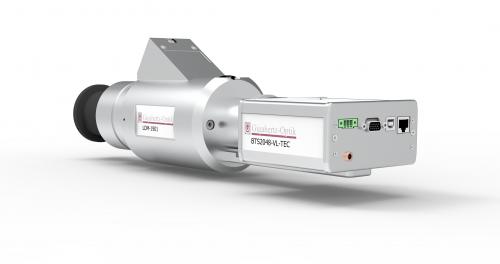
BTS2048-VL-TEC as a spectral radiance meter
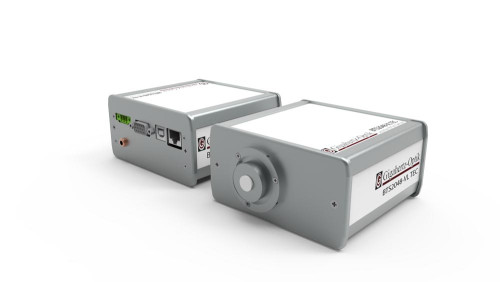
BTS2048-VL-TEC as a spectral irradiance meter
Similar Products

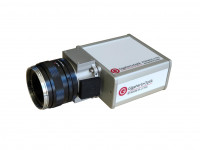
Product Categories